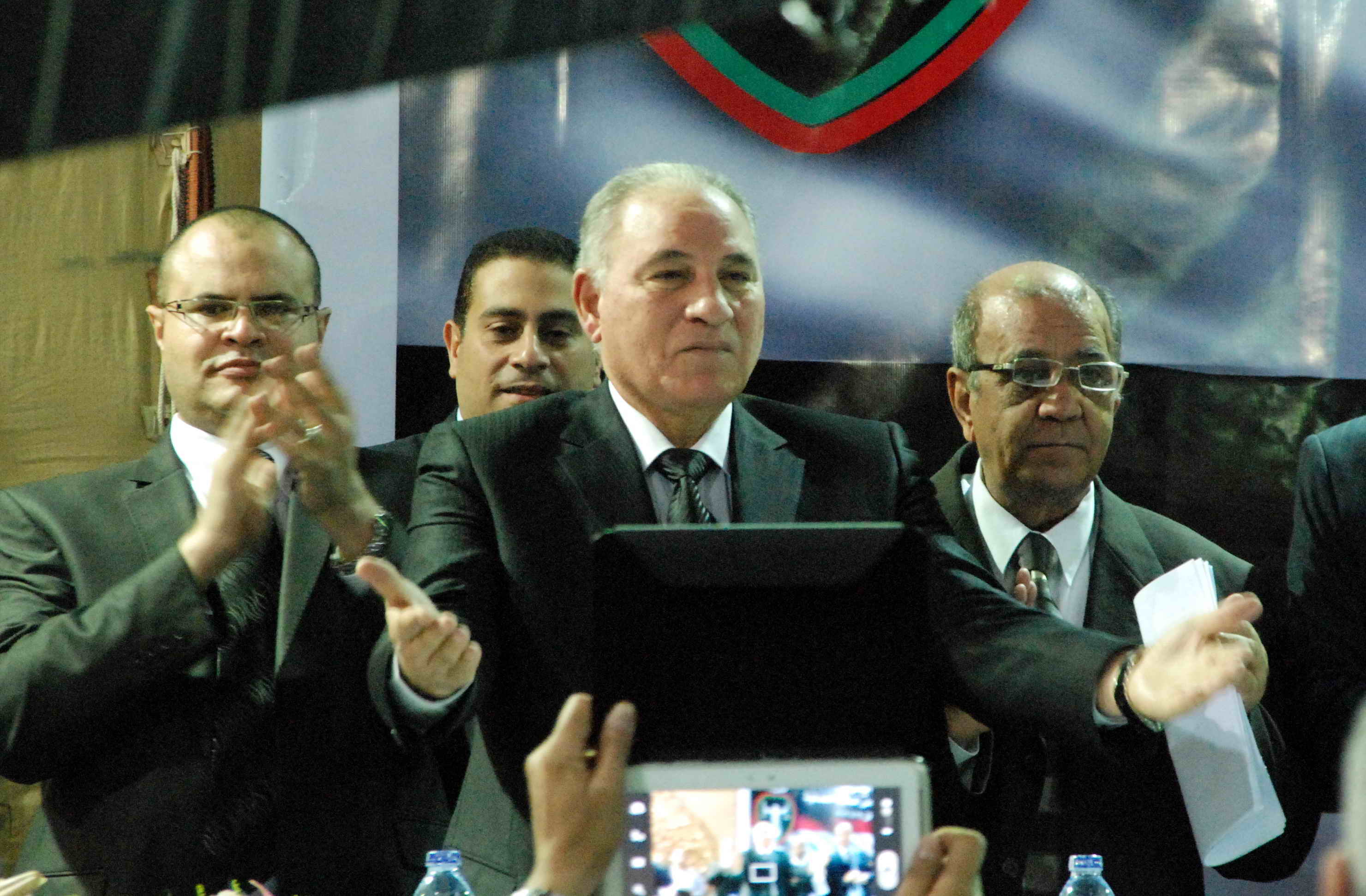The official rhetoric of the fourth edition of the National Theater festival, evident in its daily publication, is a celebration of some kind of renaissance in Egyptian Theater. Judging by the plays presented in the festival, it’s clear that Egyptian theater is in a deep slumber, its faint pulse originating from a handful of classic 1960s plays, infused with song and dance to mask their age.
The Fourth National Theater Festival came to an end on Saturday but the questions it raises are endless: Why allow so many sub-par performances to participate in the official competition? What are the criteria used for selecting competing works? Where are the Egyptian writers? What is the rationale behind the award ceremony?
The ceremony placed a lot of emphasis on the opening sketch, produced by “Ahwa Sada (Unsweetened Coffee) creator Khaled Galal. The sketch presented bits and pieces of different performative arts. The clash of styles merged into one piece of music for all the genres to dance to, complemented by reconciliatory songs reminding the audience that “we are all winners, and “the joy of the festival is to participate.
This lame piece took most of the resources and stage preparation time, leaving the winning performance, Gamal Yaqout’s adaptation of Eugene O’Neill’s 1922 play “The Hairy Ape, little time to prepare for readjusting his play to the stage of the Cairo Opera House’s Main Hall.
The festival honored four beacons of Egyptian theater: Adel Imam, Hoda Wasfy, Salah El Sa’a and Bahgat Amar, before granting a number of monetary awards, ranging between LE 5,000 to LE 15,000.
Before handing out the awards, the jury shared its candid observations about how many plays were below average competition level for any kind of theater award, and how most actors struggled with classical Arabic (fusha).The jury recommended a more rigorous selection process with fewer entries for the festivals to come.
The question of women s representation forces itself in more than one. O the 27 plays in the competition and nine on the fringe, there is only one performance by a female writer/director. With this very thin representation, no wonder the image of women presented on stage leaves a lot to be desired.
In most performances, if featured at all, the female character was restricted to being the object of desire for the male protagonist, while in some others, women were abused or tortured for no dramatic necessity.
Mohamed Abul Ela El-Salamouny’s “Under Threat, winner of the best text award, depicts a disturbed husband consistently abusing his wife emotionally and physically, ultimately driving her to suicide.
Women had it easy in “Under Threat compared to Hassan Ahmad Hassan’s disturbing play “Al-Garad (The Locusts), adapted and directed by Tareq El-Dowery.
In what appeared like a promising set inspired by ancient Egyptian temples, a chorus of 10 women is seen wailing. A radio-like announcer informs the audience of the attack of the locusts and the damage they’ve inflicted upon the land. The locusts are an analogy for an invading nation that not only destroys the land, but also rapes the women. The rape scene is staged on oil barrels, a clear symbol of the “oil riches and “corrupt morality imported from the Gulf that transformed Egyptian society.
Though the initial premise is the invasion of the locust/enemy, the play concentrates on women’s honor epitomized by their sexuality. While violated, the chorus of women laments the dishonor reeking from their souls.
This internalized guilt is pushed further when the women discover that a young woman defended herself and was not raped. Instead of celebrating her, the twisted logic of the play makes the others feel debauched for not defending themselves more forcefully. For no obvious reason, the women decide to rape their compatriot, ganging up on the young woman and breaking her hymn.
“The Locust s emphasis on virginity as women’s most precious gift is made clear when the young woman’s lover returns from his travel and, realizing that she is no longer “pure , kills her. The most frustrating moment of El-Dowery’s misogynistic play takes place in a celebration of the phallus through stacked oil barrels.
The men, in boxer shorts and jacket suits, create a huge phallic symbol on stage and gather around it clapping and making celebratory sounds.
Far from condemning rape, the play champions the rapists and condemns the women who are made victims by it. According to the logic of El-Dowery’s performance that doesn’t offer any sympathy or understanding of the women’s plight, any sexually violated woman is automatically turned into a prostitute.
The text that presents the most balanced image of women is ironically based on a 1960s text, “El-Ghoula (She-Ghoul) written by Baheeg Ismail, and directed by Moustafa Toulba. The three female protagonists represent an even-handed view of women in Egyptian society: One enforces the traditions; another accepts and implements the rules of society even if they entail locking up her daughter for months after the untimely death of her old husband on their wedding night. The third character is a radical young woman who rebels against the rules, seeking education and freedom of useless traditions imposed by the council of men.
“She-Ghoul, though dated in its setting, is the only play in the festival that celebrates women’s rights and choices, and calls for change.
What Egyptian theater seems to currently need is an enormous deus-ex-machina to liberate it from its shackles, and transport it to the third millennium with new models of fresh ideas, technology and equal rights of all members of society, both women and men.
